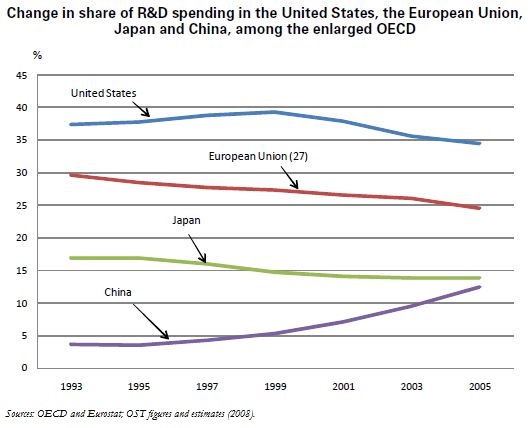Trésor-Economics No. 60 - China, "laboratory to the world?"
Technological innovation is increasingly contributing to China's industrial and economic growth. The dominant pattern, in the early stages of the country's opening up starting in 1978, consisted in acquiring technologies from subsidiaries of foreign companies doing business in China.
China's own research has flourished since 2000. This is due to an industry-oriented public policy, backed up by the necessary resources, aimed at achieving independence in terms of innovation.
However, China still lags rather behind the United States and Europe, especially in terms of results. Shortcomings remain, including insufficient emphasis on basic research and a still-modest presence in the high-tech sector, where foreign firms continue to predominate.
China nevertheless has an ambitious, proactive research and development policy, both financially and in human terms (e.g. students and researchers, etc.), as well as with respect to its goals for 2020. China plans to boost its R&D spending as a share of GDP from 1.43% in 2006 to 2% in 2010, and to at least 2.5% in 2020, implying an annual growth rate in spending of between 15 and 20%.
The aim of this policy is to make technological innovation a key driver of China's industrial development in the coming years. The authorities intend to transform China from its current position as "workshop to the world" to that of "laboratory to the world."
